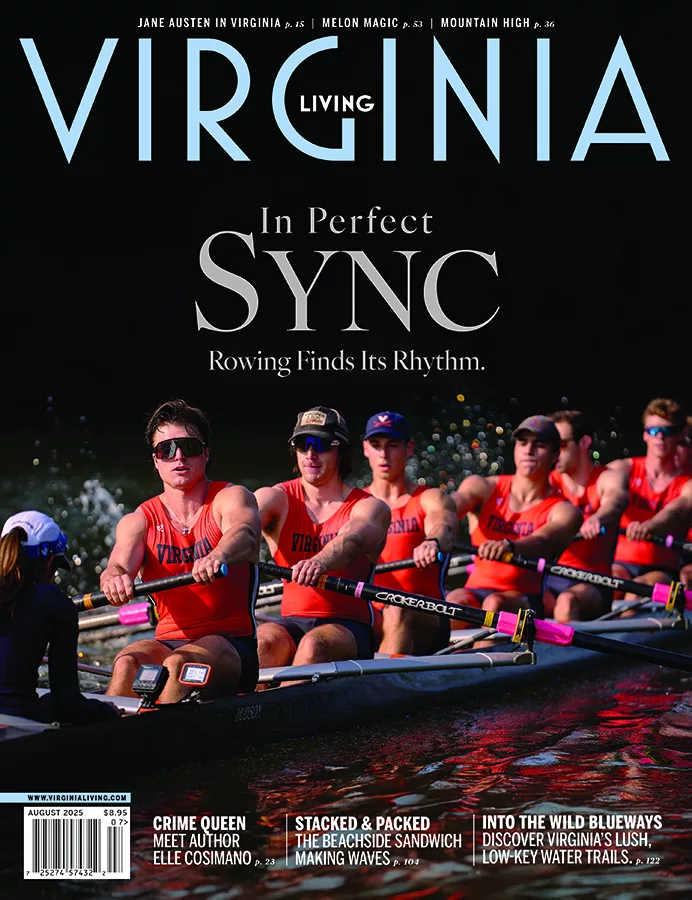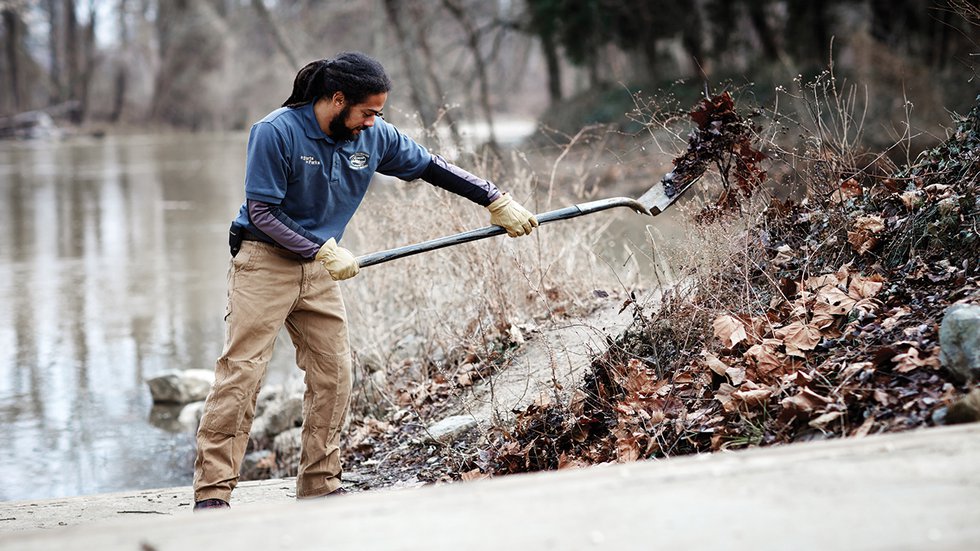For Nathan Burrell, managing the more than 600 acres of the James River Park System is all about improving accessibility to the river that sustains and inspires the capital city.

Nathan Burrell.

“This river is what gave birth to the city, what sustains it and what brings people back.”
When Nathan Burrell, who celebrated his first year as superintendent of the James River Park System in spring of 2014, opened the door of his Riverside Drive office in Richmond one afternoon the previous winter, the man standing before him said he wanted to make a donation.
As the 33-year-old Burrell waited for the man to write out the check, kayakers floated by in the river below, on their way to paddle the lower James, the stretch of water that flows past Belle Isle and Brown’s Island through the heart of downtown Richmond.
“I thought it would be easier to just come in here rather than doing it online,” said the man. “We’re only here six months out of the year, we’re in Maine the other half, but …. ” he shook his head as he finished writing, “this is the greatest place there is.” Burrell couldn’t agree more.
An Essex County native with a degree in parks and recreation management, Burrell (already married with a child at the time) landed a job in the department as a trails maintenance worker immediately after graduating from VCU in 2002. Now, the now father of two is managing the 600-plus acres of the park system that stretches from Bosher’s Dam—the 12-foot-high stone structure that spans the river beneath the Edward E. Willey Bridge—to the park’s easternmost boundary just beyond the 14th Street Bridge, downstream of downtown Richmond. It is arguably one of central Virginia’s most valuable natural resources and Richmond’s biggest tourist draw.
Burrell has had a tough act to follow. His predecessor, the charismatic Ralph White, held the post for more than 30 years. When White announced that he’d be retiring at the end of 2012, many Richmonders felt that his energy and love for the park could not be replicated. But perhaps no one was more qualified to take over for White than Burrell who had, after all, worked under the visionary steward of the James for over a decade, most recently as trails manager.
“I love Ralph. He’s the reason why I’m here today,” says Burrell, “and he’s still around. He supports me as much now as he did when he was my boss.”
But if you asked, Burrell would tell you that he’s not the next Ralph White, and he’s not trying to be.
“Ralph and I have always shared the same goals for the park, but I think I’m more willing to work through the system to make things happen,” says Burrell.
Whereas White’s tenure was marked by ongoing clashes with city government, often concerning the park’s budget, Burrell has tried to work alongside city officials to make the goals of the city and the goals of the park interchangeable.
His approach seems to be working.
Improving accessibility to the park is his top objective. “The park gets anywhere from 600,000 to 1.5 million visitors every year,” he says. “An estimated 60 percent of these are non-local. A big part of my job is trying to figure out how to increase that other 40 percent, because they’re the ones who actually pay for the park.”
In a move demonstrating the city’s shared focus on the issue of accessibility, in November 2012 City Council approved the Richmond Riverfront Plan. The goal of the plan is to significantly improve river access from downtown Richmond, and as park superintendent, Burrell has a major role in guiding its implementation.
“The energy that has developed around the Riverfront Plan, around the park in general is just amazing. This river is what gave birth to the city, what sustains it and what brings people back. The powers that be recognize this. The number of dedicated supporters of the Riverfront Plan, from the mayor’s office on down, is proof that local government gets it,” says Burrell.
Working in conjunction with the Riverfront Plan is the Bicycle Pedestrian Plan, which aims to improve bike access to the park in advance of the World Cycling Championships, to be held in Richmond in 2015. An avid cyclist himself, Burrell has shown support for making the river banks pedestrian-and bike-friendly. Among his chief concerns is the development of the VEPCO Levy Dam Walk, which will complete what remains of the old, broken “bridge to nowhere” that currently juts out over the river from Brown’s Island.
“That dam walk,” he says with a smile, “would change the entire way the city and downtown area functions, the way neighborhoods are connected. Every great city in the world that has a river running through it has a bicycle pedestrian bridge. I can’t stress its importance enough.”
The bridge would connect Brown’s Island to the south bank near the Manchester climbing wall area, and would be accessible exclusively to cyclists and pedestrians. Work on the dam walk is already in progress, but Burrell believes refurbishing and construction of the bridge will take years to complete.
Burrell’s efforts to improve relations between the park and city officials have certainly produced results. He has been able to bolster his staff, for instance, as two seasonal positions were recently made permanent. But the group of paid employees he works with is still only five strong, and the budget is still tight even as the park continues to see more and more visitors each year. Thus, he is quick to point out that the preservation of the park relies on the day-to-day efforts of the 1,500 to 2,000 volunteers that work in the park every year.
“Volunteers are the backbone,” he says. “All the bridges and trails, they’re paid for by the community in sweat equity. The things you have here, in this city, you don’t have in any capital city anywhere else. And the fact that people are willing to give whatever they can to us, time, money, expertise, it’s just an incredible feeling.”
Though Burrell has no plans to leave Richmond anytime soon, he can’t say for sure if he will replicate White’s 30-plus year run in the role. But, what he does know is that “this city is changing tremendously,” says Burrell. “It’s a great time to be a Richmonder.”
For more information about the James River Park System, go to JamesRiverPark.org









